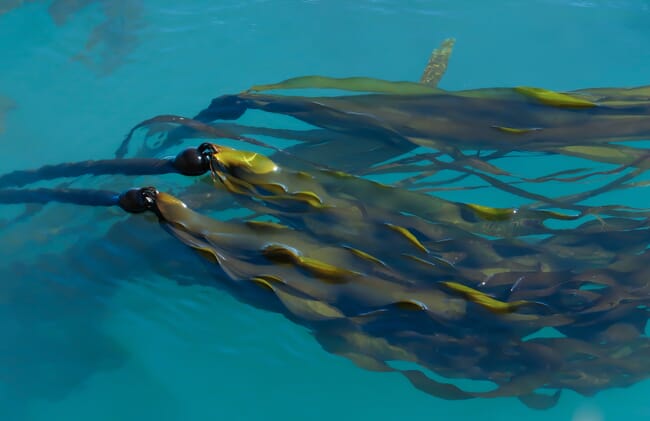
A team of scientists from Heriot-Watt University has provided new modelling evidence in a report showing the extent to which underwater ecosystems such as kelp forests, seagrass beds and oyster reefs could help mitigate the impact of waves hitting Scotland's shores.
The study, commissioned by the Centre of Expertise for Waters (CREW), used advanced computer modelling to simulate how these habitats absorb wave energy. The results showed kelp beds were especially effective, potentially cutting wave height by up to 70 percent in some areas.
Storms and rising sea levels
The researchers focused on two case study locations that are highly exposed to storms and rising sea levels: Sanday in Orkney and Uist in the Outer Hebrides. To assess the wave-damping effect of different marine habitats, the researchers used extreme offshore wave conditions – those expected once every 100 years – detailed seabed maps and habitat properties to drive a nearshore wave model.
This allowed them to test how factors such as wave exposure, water depth and habitat characteristics – like the density, height and shape of seaweed or seagrass, as well as the extent of habitat coverage – influence how much wave energy is reduced before reaching the shore.
They predict that, in Sanday, the presence of kelp could reduce wave heights by up to 25 percent during severe conditions. In Uist, potential reductions reached up to 70 percent. The other habitats studied absorb less wave energy because they are not typically found in highly wave-exposed areas. While they help reduce wave energy to some extent, they are more vulnerable to damage during extreme events since they need more time to recover and restore to remain effective over time.
“Coastal flooding and erosion are increasing concerns across Scotland and winter storms are intensifying. While hard infrastructure like sea walls is one option to help protect coastal communities and assets, this study shows the potential of nature-based solutions for flood risk management.
“Our model shows that established kelp and seagrass beds could act like underwater forests. They could reduce the power of waves and help stabilise the sea floor. With the right protection and investment, these habitats could form a key part of Scotland’s climate resilience strategy,” said Qingping Zou, professor of coastal dynamics at Heriot-Watt’s Lyell Centre, in a press release.
Professor Joanne Porter is based at Heriot-Watt’s Orkney campus and is a co-author of the report.
“Our report shows that habitats like kelp, seagrass, oyster reefs and blue mussel beds could act as powerful buffers against storms. But these ecosystems are also fragile. If we want to incorporate them into our flood defences, we’ll need to manage and protect them carefully. These ecosystems are also concentrated along Scotland’s west coast and islands, in contrast with the east coast, which has fewer due to exposed conditions and the impact of historical overharvesting,‘‘ said Porter.
The team says their findings show that policymakers should integrate marine habitat protection into flood defence strategies. Zou explains they would ideally prioritise habitat protection and restoration in the most vulnerable coastal areas and make long-term commitments to projects that boost these underwater forests and beds.



